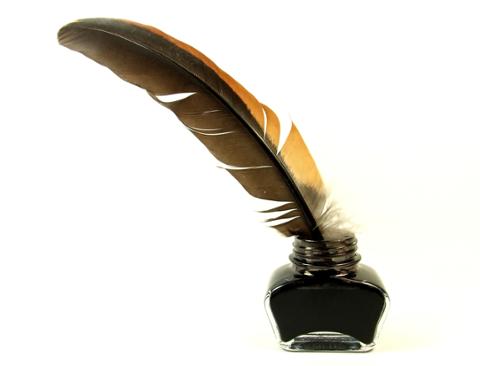
It’s a new year, which for many tech pros means it’s time to start polishing those résumés and cover letters. With résumés, some hiring managers and recruiters recommend
getting a little inventive with the format. But should you engage in a bit of creativity when writing your cover letter? Lots of hiring managers will tell you that the best cover letters are direct and to-the-point, with no illustrations or other flourishes to cloud up your message. If you’re applying for a job that demands creativity, however, such as a designer, it may pay to make things a little bit more colorful. If you have a logo, consider using a small version of it in your header; and if a creature you designed for your last video game lurks in the margins, its presence may help sell your imagination and creative skills—especially if you’re applying to a funky startup. For most tech pros, though, the best strategy is to keep your cover letter minimalist and as straightforward as possible. Many job candidates make the mistake of writing a rambling cover letter, including lengthy regurgitations of their job history and aspirations. Given how most HR managers and recruiters give every candidate’s package only a few seconds’ consideration, any excessive windup puts you at risk of getting tossed before anyone even reads your résumé. If you’re applying to a job cold, with no friends or former colleagues to put in a good word on your behalf with HR, you pretty much have your cover letter’s first sentence or two to make a good impression. Start fast, with a pitch that takes your strongest selling points and places them in the context of the company’s mission. For example: “I’m interested in the position of lead developer because I want to use my skills in developing iOS applications to help [company] create the next generation of [company’s specialty].” Be aware that the hiring manager likely isn’t all that interested in your career goals and preferences, at least at first—they want to know what you can do for their firm. You’ll also want to avoid any so-called “boilerplate” material—stuff that reads like a lightly modified take on a standard template. If your attempt at a cover letter seems too generic, take the time to rewrite it in your voice (and watch out for typos or grammatical errors, which will also doom your chances at landing an interview). In other words:
- Don’t Submit an Epic Manuscript: Keep everything to a page.
- Proofread Like Your Life Depends on It: It just might.
- Know Your Audience: What can you do for them?
- Write a Strong Conclusion: End with a call to action: “I’m available during [time period] for an interview. I will also follow up on [date]. I look forward to meeting you!”
- Align Cover Letter and Résumé: Make sure your career info in your cover letter matches up seamlessly with anything mentioned in your résumé—including dates and titles.
And remember, every résumé should include a cover letter—if you neglect the latter, you rid yourself of another golden opportunity to sell yourself.
 It’s a new year, which for many tech pros means it’s time to start polishing those résumés and cover letters. With résumés, some hiring managers and recruiters recommend getting a little inventive with the format. But should you engage in a bit of creativity when writing your cover letter? Lots of hiring managers will tell you that the best cover letters are direct and to-the-point, with no illustrations or other flourishes to cloud up your message. If you’re applying for a job that demands creativity, however, such as a designer, it may pay to make things a little bit more colorful. If you have a logo, consider using a small version of it in your header; and if a creature you designed for your last video game lurks in the margins, its presence may help sell your imagination and creative skills—especially if you’re applying to a funky startup. For most tech pros, though, the best strategy is to keep your cover letter minimalist and as straightforward as possible. Many job candidates make the mistake of writing a rambling cover letter, including lengthy regurgitations of their job history and aspirations. Given how most HR managers and recruiters give every candidate’s package only a few seconds’ consideration, any excessive windup puts you at risk of getting tossed before anyone even reads your résumé. If you’re applying to a job cold, with no friends or former colleagues to put in a good word on your behalf with HR, you pretty much have your cover letter’s first sentence or two to make a good impression. Start fast, with a pitch that takes your strongest selling points and places them in the context of the company’s mission. For example: “I’m interested in the position of lead developer because I want to use my skills in developing iOS applications to help [company] create the next generation of [company’s specialty].” Be aware that the hiring manager likely isn’t all that interested in your career goals and preferences, at least at first—they want to know what you can do for their firm. You’ll also want to avoid any so-called “boilerplate” material—stuff that reads like a lightly modified take on a standard template. If your attempt at a cover letter seems too generic, take the time to rewrite it in your voice (and watch out for typos or grammatical errors, which will also doom your chances at landing an interview). In other words:
It’s a new year, which for many tech pros means it’s time to start polishing those résumés and cover letters. With résumés, some hiring managers and recruiters recommend getting a little inventive with the format. But should you engage in a bit of creativity when writing your cover letter? Lots of hiring managers will tell you that the best cover letters are direct and to-the-point, with no illustrations or other flourishes to cloud up your message. If you’re applying for a job that demands creativity, however, such as a designer, it may pay to make things a little bit more colorful. If you have a logo, consider using a small version of it in your header; and if a creature you designed for your last video game lurks in the margins, its presence may help sell your imagination and creative skills—especially if you’re applying to a funky startup. For most tech pros, though, the best strategy is to keep your cover letter minimalist and as straightforward as possible. Many job candidates make the mistake of writing a rambling cover letter, including lengthy regurgitations of their job history and aspirations. Given how most HR managers and recruiters give every candidate’s package only a few seconds’ consideration, any excessive windup puts you at risk of getting tossed before anyone even reads your résumé. If you’re applying to a job cold, with no friends or former colleagues to put in a good word on your behalf with HR, you pretty much have your cover letter’s first sentence or two to make a good impression. Start fast, with a pitch that takes your strongest selling points and places them in the context of the company’s mission. For example: “I’m interested in the position of lead developer because I want to use my skills in developing iOS applications to help [company] create the next generation of [company’s specialty].” Be aware that the hiring manager likely isn’t all that interested in your career goals and preferences, at least at first—they want to know what you can do for their firm. You’ll also want to avoid any so-called “boilerplate” material—stuff that reads like a lightly modified take on a standard template. If your attempt at a cover letter seems too generic, take the time to rewrite it in your voice (and watch out for typos or grammatical errors, which will also doom your chances at landing an interview). In other words:


